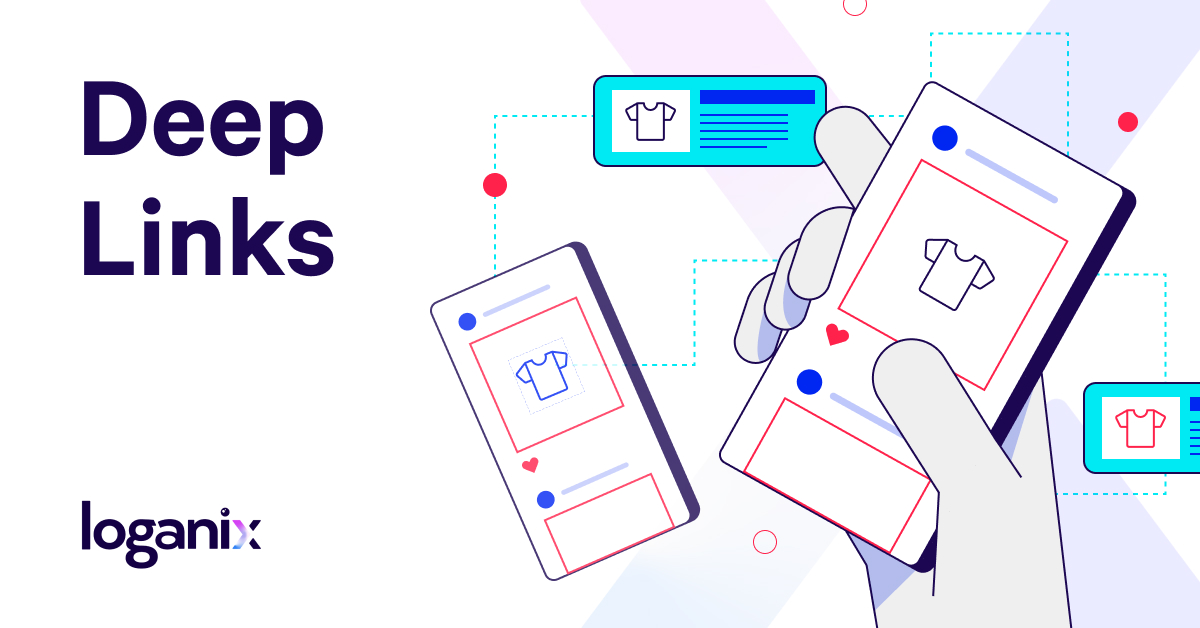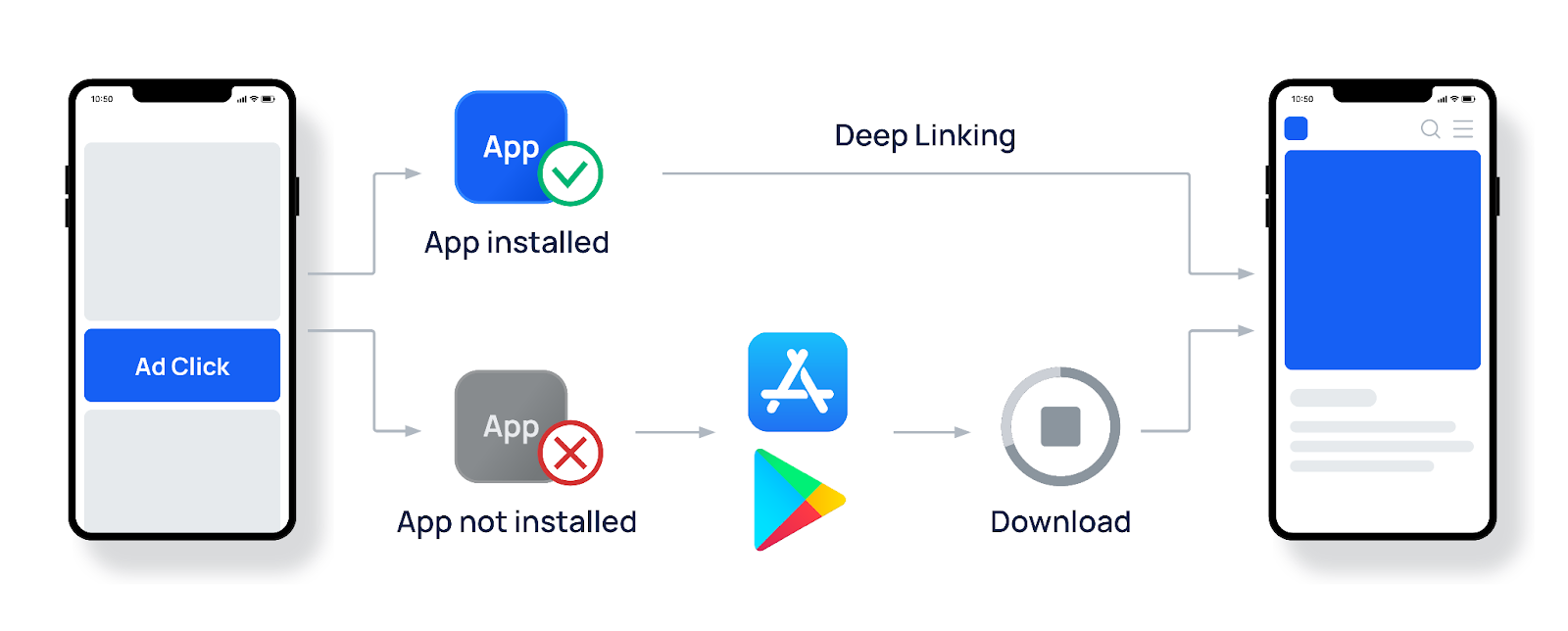Deep Linking: What You Need To Know & How It Works
In an increasingly interconnected digital world, where instant access is not just expected but demanded, how do we navigate the intricate pathways that allow users to seamlessly leap from one point to another within the vast expanse of the internet and mobile applications?
The very fabric of the modern internet is woven with the threads of hyperlinks, the essential components that bind information and guide users through a labyrinth of digital content. Among these, "deep linking" has emerged as a crucial technique, a technological marvel that allows for precise navigation within applications and websites, enhancing user experiences and driving business growth.
Deep linking, at its core, is a method of directing users to a specific location within an application or website, bypassing the need to navigate through a series of menus or pages. Instead of landing on a homepage, a deep link propels the user directly to the desired contenta specific product page, a particular article, or a unique feature within an app. This efficiency is a game-changer, particularly in the mobile realm, where user attention spans are notoriously short.
- Buscar Kid And Mom Cctv Video What You Need To Know Now
- Valvoline Oil Change Deals Get 50 Off Save Big
Imagine you're browsing a social media platform and come across an advertisement for a pair of shoes you've been eyeing. A regular link might direct you to the app's homepage, forcing you to search and sift through countless options before finding the advertised item. However, a deep link changes the game. It takes you directly to the product page within the app, saving precious time and minimizing friction, which, in turn, dramatically improves the likelihood of a conversion.
Deep linking transcends simple convenience; it is a strategic tool for businesses, a cornerstone of modern digital marketing. By enabling direct access to relevant content, deep links transform customer engagement and offer a more streamlined, user-friendly experience. They empower businesses to drive app installs, increase user retention, and boost conversions, all of which culminate in enhanced customer loyalty.
But how do these digital breadcrumbs work? Understanding the mechanics of deep linking requires a dive into the technical underpinnings of the internet and mobile operating systems. The process involves leveraging specific protocols and URL structures to pinpoint the correct destination within an app or website. These links contain parameters that instruct the system to navigate to the precise location, similar to a GPS guiding you to a specific address.
- Aaron Kendrick De Niro Rising Stars Journey Hollywood Impact
- Stephanie Mcmahon Nude Rumors Fact Vs Fiction
There are several forms that deep links can take, each designed with a specific purpose in mind. Regular deep links, as the name implies, are the most straightforward type. These links, typically initiated from a click on a website or social media platform, will direct users to a relevant landing page within the application if its already installed. If the app isn't installed, it can redirect the user to the app store to begin the installation process.
Deferred deep links are another crucial type. They are able to recognize whether the app has been installed or not and will delay taking the user to the desired content until after installation is complete. This is often an exceptional feature, as it guarantees the user arrives at the specified destination within the app as soon as the installation process is finished.
Then there are smart links. These powerful links automatically detect the user's device and operating system, directing them to the appropriate destination, whether it's a web page, app store listing, or specific in-app content. Smart links create a seamless and intuitive experience, adapting dynamically to the user's environment and greatly increasing the chances of a conversion.
The significance of deep links cannot be overemphasized in the world of mobile marketing. They serve as the bridge between marketing campaigns and in-app experiences, allowing marketers to track and analyze user behavior, personalize content, and optimize the user journey. They are the driving force behind increased app installs, a greater understanding of user behavior, and, ultimately, more successful marketing campaigns.
But the process is not without its hurdles. Implementing deep linking demands a solid understanding of technical nuances and a comprehensive approach to design. Ensuring accurate execution requires a focus on setup, testing, and constant optimization.
To ensure successful implementation, developers must diligently configure their app's "AndroidManifest.xml" file, which acts as the blueprint for the application, detailing its components and functionality. This step is essential to allow the operating system to recognize and interpret deep links correctly. Beyond this configuration, thorough testing on a device is absolutely critical to ensuring proper functionality. Testing on an actual device, or by utilizing an Android emulator, will assist in ensuring that the deep links function as designed.
Furthermore, deep linking can raise questions related to resource management and copyright. For instance, "deep hotlinking," linking directly to an image or video hosted on another website, might inadvertently cause the bandwidth usage of the destination site to increase, which could potentially lead to performance issues or additional costs for the host. Additionally, the unauthorized use of copyrighted content through deep linking can violate intellectual property rights.
Despite these possible challenges, the benefits of deep linking, particularly for businesses, are significant. Deep links offer a more engaging user experience by delivering users directly to the content they seek, increasing user retention and promoting conversions. They empower businesses to track user actions, refine marketing campaigns, and gain invaluable insights into user behavior.
The impact of deep linking extends beyond marketing. In the realm of e-commerce, they enhance the user experience by directing users to particular product pages, thereby boosting the likelihood of a sale. In social media, they allow users to share content from within an app, thereby expanding the reach of the platform and promoting user engagement.
The use of deep links is not restricted to any specific type of application. From e-commerce to social media to travel and more, the benefits of deep linking are apparent. By eliminating the friction from the user experience, deep links are key in driving conversions and helping businesses succeed in a competitive environment.
Deep linking technology, with its diverse applications, continues to evolve and open new possibilities. As technology advances, understanding and embracing these sophisticated linking methods is critical for anyone looking to achieve success in the digital sphere.
| Aspect | Details |
|---|---|
| Definition of Deep Linking | A technique enabling direct access to specific locations within apps or websites. |
| Purpose | Enhance user experience, drive app installs, increase conversions, and boost user retention. |
| Mechanics | Utilizes specific protocols and URL structures with parameters to direct users to the correct location. |
| Types | Regular, deferred, and smart links. |
| Regular Deep Links | Direct users to a relevant landing page within an app if installed; otherwise, prompt app installation. |
| Deferred Deep Links | Delay in directing the user to the app's content until after app installation is completed. |
| Smart Links | Dynamically adapt to the user's device and operating system to provide seamless navigation. |
| Importance in Mobile Marketing | Connects marketing campaigns with in-app experiences; essential for tracking and analyzing user behavior. |
| Implementation Challenges | Requires technical understanding, setup, and rigorous testing. |
| Potential Issues | Resource management and copyright concerns, such as with deep hotlinking. |
| Benefits for Businesses | Increased user engagement, higher conversion rates, and improved insights into user behavior. |
| Applications | E-commerce, social media, and various other app types. |
| Impact | Reduces friction in user experience, driving conversions and supporting business growth. |
| Future | Continuous evolution and exploration of new possibilities as technology advances. |
So, in the world of digital interconnection, where the capacity to create smooth user experiences is a differentiating factor, the technique of deep linking stands tall. It's a crucial instrument for both businesses and consumers, a game-changer that has altered the dynamics of how we engage with the internet and mobile applications. As we move forward, our grasp of deep linking and its continuously evolving potential will remain critical.
- Ullu Web Series Vegamovies Download Guide Safe Legal Ways
- Diva Flawless Onlyfans Leaks Latest Nude Videos Photos

Deep Dive Into Deep Hot Links Mastering SEO

The Ultimate Guide To Deep Hot Link Website A Digital Revolution
Deephot Link Scandal The Shocking Truth Revealed!